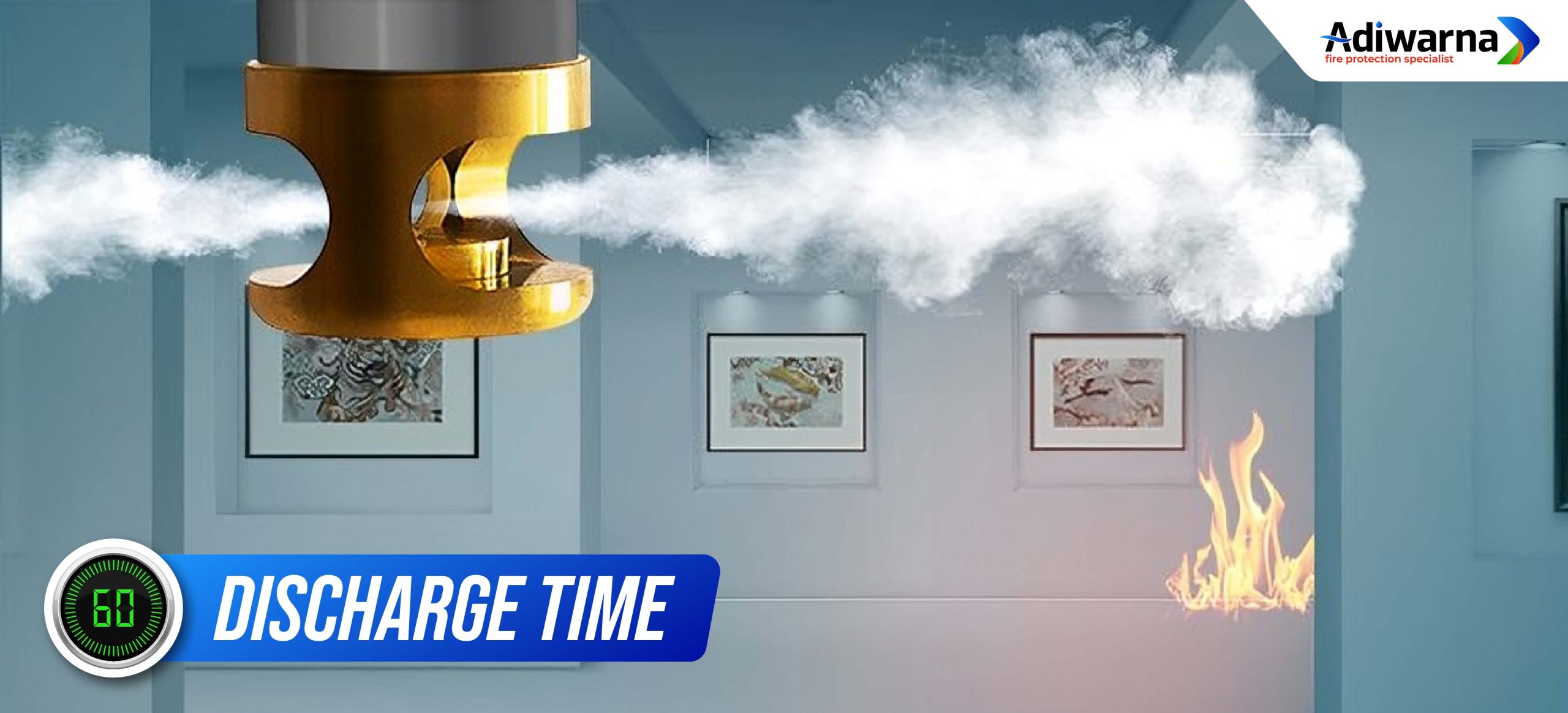A fire suppression system is a system designed to detect and extinguish fires automatically or manually in various types of environments, such as commercial, industrial, or critical facilities. One important element in the operation of these systems is the discharge time. So, what is discharge time and why is it important?
Definition of Release Time
Release time is the duration of time taken by the extinguishing medium (such as gas, liquid, or other chemical) to be fully released from the fire extinguishing system to the intended area. This duration is usually measured from system activation until all the extinguishing media is discharged from nozzles or other distribution devices.
Factors Affecting Release Time
- Types of Extinguishing Media
- Media such as carbon dioxide (CO2), FM-200 gas, or water-based liquids have different physical characteristics and release mechanisms.
- Gas-based media usually have a faster release time than liquid-based media.
- System Pressure
- High-pressure systems allow the media to be released more quickly.
- Insufficient pressure can extend the discharge time and reduce the effectiveness of the system.
- Size and Design of Protected Area
- Larger or complex areas take longer to distribute the media evenly.
- An optimal system design can minimize the discharge time.
- System Configuration
- Pipe length and diameter, number of nozzles, and distribution orientation affect the flow of the extinguishing medium.
- Pipe length and diameter, number of nozzles, and distribution orientation affect the flow of the extinguishing medium.
Importance of Release Time
- Outage Effectiveness
- A release time that is too slow may increase the risk of fire spreading before the extinguishing media has reached the entire area.
- Standardized extinguishing times ensure that the fire can be extinguished quickly before causing further damage.
- Compliance with Standards
- Many international standards such as NFPA (National Fire Protection Association) set a maximum limit on extinguishing time.
- Compliance with these standards is part of ensuring occupant safety and asset protection.
- Effects on Ventilation System and Environment
- Discharging time also affects the interaction between extinguishing media and ventilation in protected areas. Emptying too soon or too late can reduce extinguishing effectiveness.
Example of Discharge Time Standard
- Inert Gas System: Typically requires a discharge time of about 60-120 seconds, depending on system specifications.
- FM-200 system: These media are often designed to dispense water in less than 10 seconds to ensure a rapid response to fires.
- Foam system: The nominal discharge time for foam fire suppression systems on mine vehicles is 50 seconds. The average discharge rate should be at least 4.1 liters per minute per square meter over the fire risk area.

